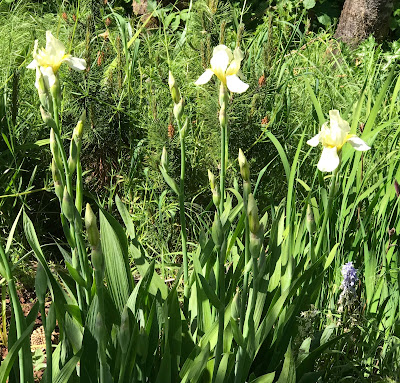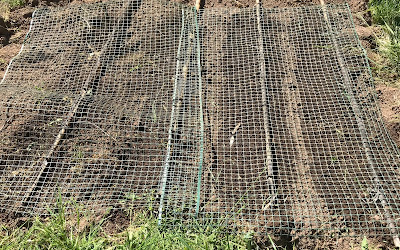 |
| Baby Cowlitz Peaches. 5.1.19 |
 |
| Baby Cowlitz Peaches. 5.1.19 |
Here is where things are so far this year on my peach and peach leaf curl (PLC) journey.
"Cowlitz Peach" (my designation for a seedling from Oregon Curl Free) has two or three spots of leaf curl. Nothing significant. Given the time of year, I doubt it will extend beyond that.
The tree has roughly 2 dozen peaches. I stopped counting there. They are widely spaced and minimal or no thinning will be needed.
This tree is in the chicken yard. It is not adjacent to other peach trees that have extensive leaf curl. On the other hand, those peaches with extensive leaf curl were planted no where near any peach trees so it must be spores borne on the air.
Over the past 2 decades, I think I've spent at least $200 on peach trees, and had few peaches to show for it. Most had extensive PLC and eventually died of the disease.
 |
| Baby Cowlitz Peaches. 5.1.10 |
 |
| Cowlitz Peach Tree. 5.1.19 |
Currently, in my orchard are Charlotte (7 years old), Salish Summer (It was "Q-1-8" when I bought it), Frost, and Kreibich Nectarine. All are sold in the catalogs as PLC Resistant or PLC tolerant. Of these, Charlotte has been tolerant of PLC but has never done much. It usually gets a dose of PLC, blooms, looks ratty, then recovers and has a few small peaches. This year looks about the same so far. PLC much worse than "Cowlitz" peach. Salish Summer had a little leaf curl last year and had some dieback. I'm not sure if it's just making a late start this year, or if it's declining. Frost and Kreibich were planted in Spring 2018. They are still getting established. Kreibich had PLC almost right out of the box. Frost had less, but still notable. We'll see how it does.
At the moment, Cowlitz looks pretty good. Garden experiments can lead a lot of directions, and are not scientific, so who knows? But even if I get one crop of peaches this year, and they are small but decent flavor, I'll be very, very happy.
 |
| Charlotte "PLC Resistant" Peach showing PLC. 5.1.19 |
 |
| Charlotte Peach Tree. 5.1.19 |
 |
| Frost PLC Resistant Peach. 5.1.19 |
 |
| Kreibich PLC Resistant Nectarine. 5.1.19 |
 |
| Salish Summer PLC Resistant Peach. 5.1.19 |












































